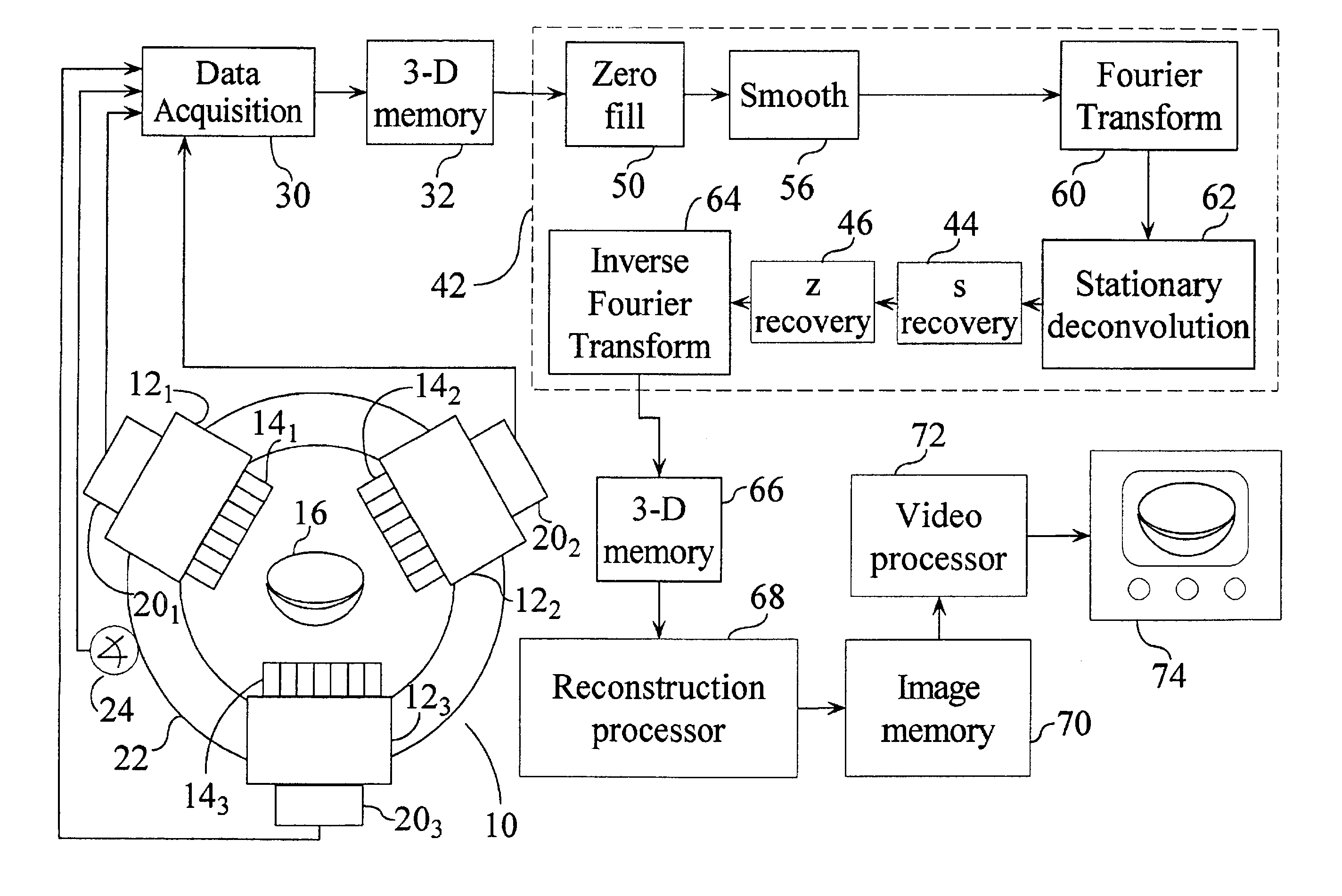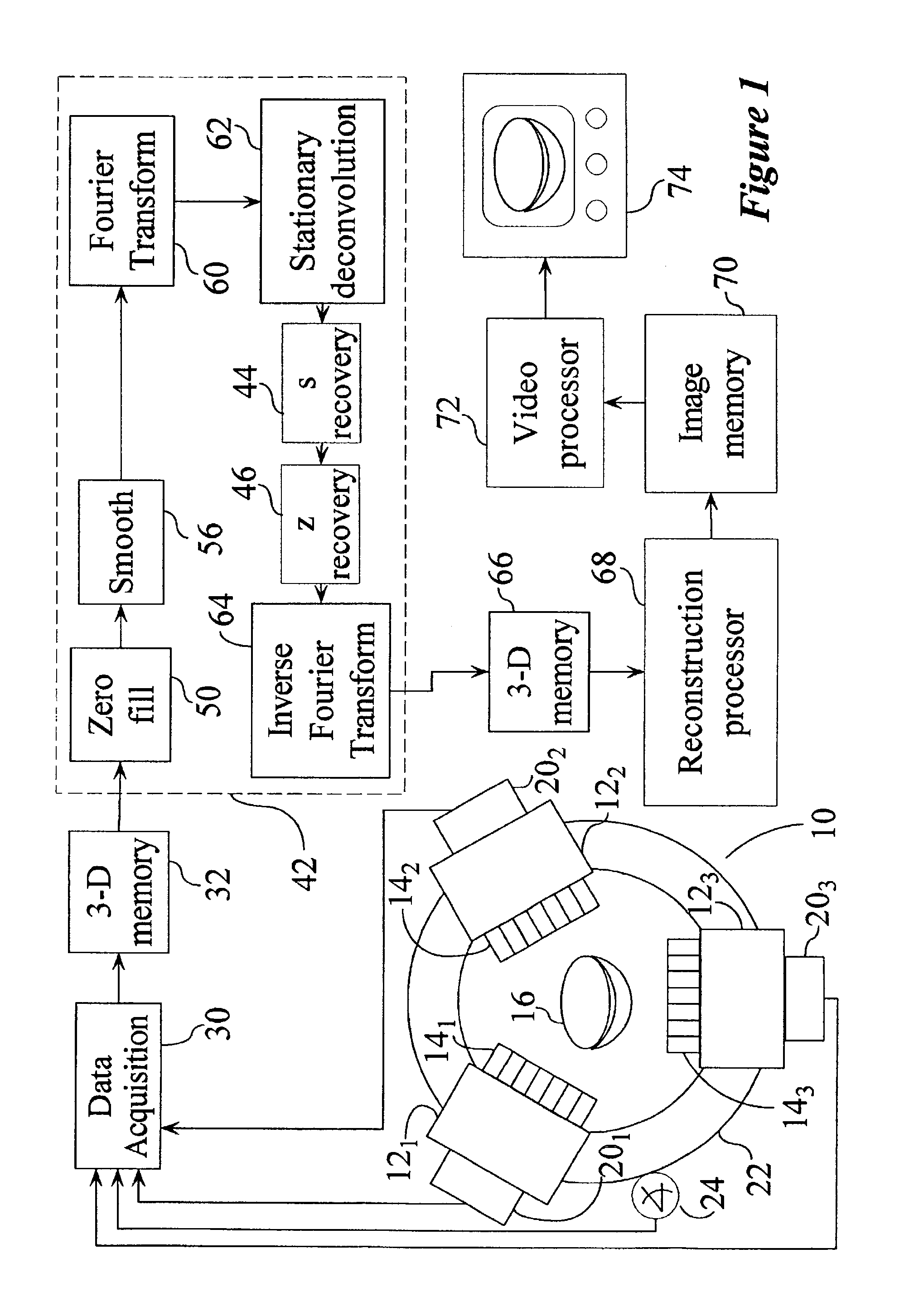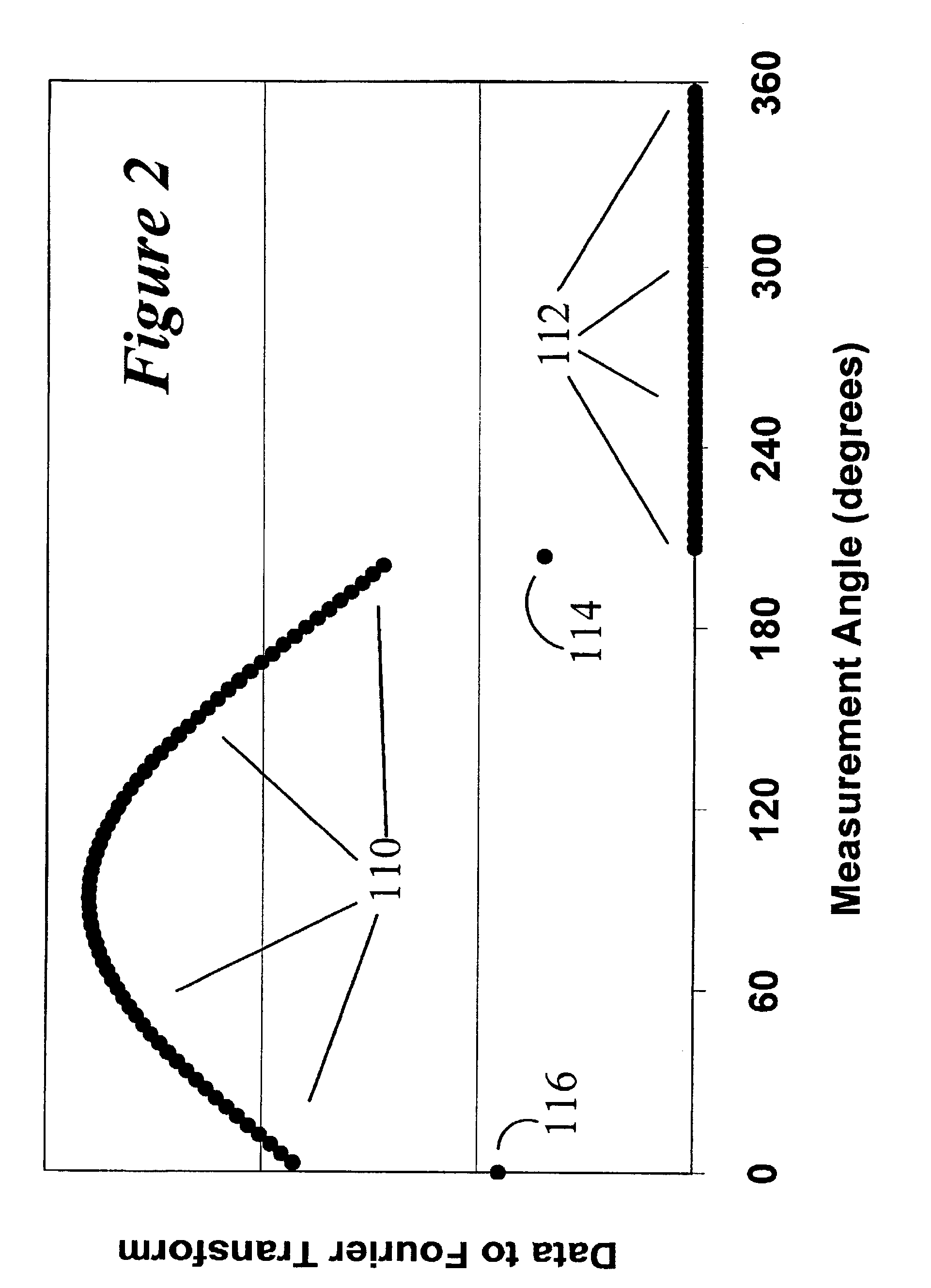Limited-angle frequency-distance resolution recovery in nuclear medicine imaging
a frequency-distance resolution and limited-angle technology, applied in the field of diagnostic imaging art, can solve the problems of depth-dependent blurring and uncertainty, non-stationary convolution which is difficult to deconvolve, prior art resolution recovery techniques do not work on partial data sets, etc., and achieve the effect of accurate restoration of limited-angle data sets
- Summary
- Abstract
- Description
- Claims
- Application Information
AI Technical Summary
Benefits of technology
Problems solved by technology
Method used
Image
Examples
Embodiment Construction
[0017]With reference to FIG. 1, a nuclear camera system 10 includes a plurality of detector heads 12, in the preferred embodiment three detector heads 121, 122, and 123. Two of the three heads are typically used to obtain emission data, while the third head is used to obtain transmission data. Of course, other numbers of detector heads can also be utilized. Each of the detector heads includes a collimator 141, 142, and 143. In the preferred embodiment, the collimators collimate incoming radiation from a subject 16 to parallel rays. However, because the collimators have finite size, each collimator permits rays which lie along a corresponding cone to pass to the detector head. The cone expands with depth into the patient from the detector head.
[0018]Each of the detector heads includes a reconstruction system 201, 202, and 203 which determines the coordinates on a face of the detector head in the longitudinal or z-direction of the patient and the transverse direction across the detect...
PUM
 Login to View More
Login to View More Abstract
Description
Claims
Application Information
 Login to View More
Login to View More - R&D
- Intellectual Property
- Life Sciences
- Materials
- Tech Scout
- Unparalleled Data Quality
- Higher Quality Content
- 60% Fewer Hallucinations
Browse by: Latest US Patents, China's latest patents, Technical Efficacy Thesaurus, Application Domain, Technology Topic, Popular Technical Reports.
© 2025 PatSnap. All rights reserved.Legal|Privacy policy|Modern Slavery Act Transparency Statement|Sitemap|About US| Contact US: help@patsnap.com



